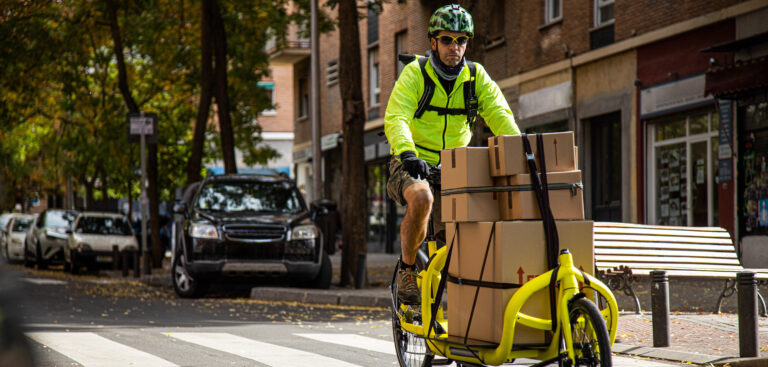New York City Department of Transportation (NYC DOT) commissioner Ydanis Rodriguez has announced that action has been taken to authorize the use of larger pedal-assist cargo bikes. The proposed rule is designed to make deliveries safer and more sustainable by reducing the number of delivery trucks on New York City streets.
“Greater use of cargo bikes will bring incredible environmental and safety benefits for New York City by reducing the number of large, high-polluting trucks on our streets,” said Rodriguez. “Just two cargo bikes can replace one box truck, increasing safety and reducing CO2 emissions by 14 tons per year – equivalent to 30,872 passenger car miles traveled.”
The proposed rule would expand low- or no-emission options for freight deliveries – including packages and groceries – by allowing the use of pedal-assist bicycles up to 48in wide with up to four wheels. The expanded width and wheel allowance, combined with the pedal-assist feature, makes cargo bikes easier to pedal while carrying heavy loads. Current rules restrict such devices to a maximum width of 36in with no fourth wheel.
Since NYC DOT’s launch of its Commercial Cargo Bike Pilot Program in 2019, cargo-bike deliveries have increased significantly in New York City. In 2022, cargo bikes made more than 130,000 trips delivering over five million packages, resulting in the reduction of over 650,000 metric tons of CO2 emissions and demonstrating their effectiveness as a last-mile delivery mode.
The pedal-assist feature of these bikes activates a small motor only when users are pedaling. The technology is commonly used by existing e-bicycle carriers as well as on Citi Bike’s popular pedal-assist models.
“New York is the densest city in the nation, but roughly 90% of our freight is transported by trucks competing for extremely limited parking space and increasing traffic congestion,” said Corey Hannigan, active transportation program manager at the Tri-State Transportation Campaign. “This situation is only worsening as demand for home deliveries continues to skyrocket.
“We have seen e-cargo-bike growth in New York lag behind peer cities in Europe, mainly due to a restriction on cargo bikes wider than 36in, combined with a disconnected protected bike lane network that often features very narrow lane widths. Standard pallet-sized 48in-wide cargo bike models are commonly used by international carriers like DHL and UPS, so increasing allowable widths could allow more manufacturers and carriers to enter the market, bringing down costs.”
For more on sustainability, please click here.


